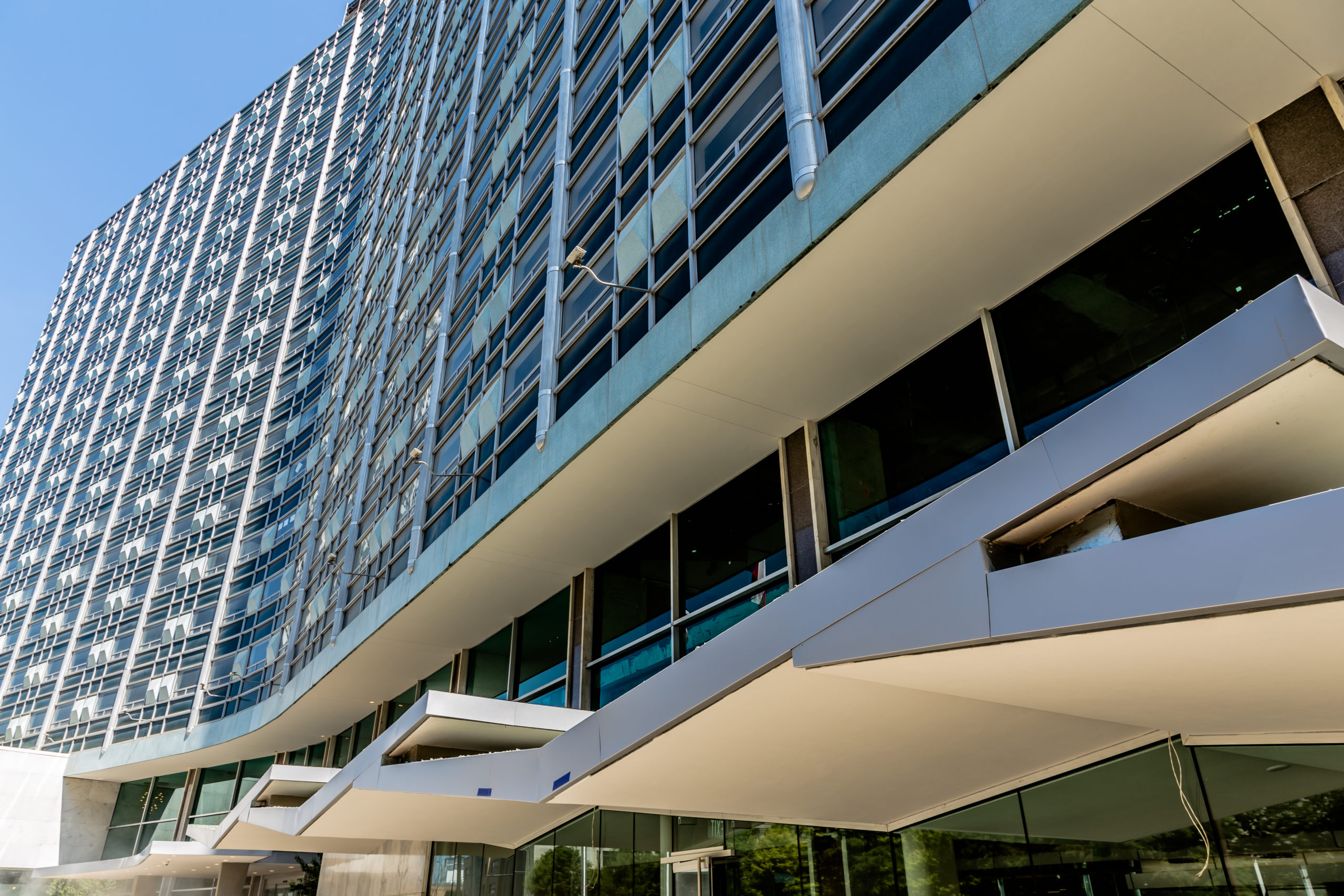It’s been more than 15 years since anyone checked into the towering crescent of glass and metal located at the intersection of Commerce and St. Paul Streets in Downtown Dallas. But The Statler Hilton is soon to re-open to the public, becoming not just a reminder of Dallas’ rich history but also a symbol of the city’s forward-thinking commitment to urban development.
The hotel first opened in 1956 as The Statler Hilton Dallas. Designed by Conrad Hilton’s “house architect” William B. Tabler, this gleaming example of Mid-Century modern architecture was one of the first buildings of its kind to grace the Texas landscape. With its unique location and ambiance, The Statler Hilton Dallas soon established itself as a flagship of the Hilton brand. Soaring more than 20 floors, the hotel housed more than 1,000 rooms and a ballroom capable of comfortably accommodating nearly 2,000 revelers.
During its heyday, The Statler Hilton Dallas was the largest convention facility in the Southwest. It was also the first hotel to feature many of the amenities now considered standard in the hospitality industry. For many guests staying at The Statler, Dallas was their introduction to elevator music, big-screen TVs and public art installations (“A Wishing Star,” a gold-plated, mobile-like sculpture created by renowned abstractionist José de Rivera). But perhaps The Statler’s most notable — and arguably most glamorous — feature was its rooftop heliport, which offered direct service to Love Field for the hotel’s most distinguished guests.
And The Statler most certainly welcomed distinguished guests. Coco Chanel visited not long after the hotel’s grand opening (she was feted at the 1957 Neiman Marcus Fashion Exposition Awards), and Elvis Presley may have infamously been refused a room during his years of Army service. During this era, even the hotel’s animal visitors achieved celebrity status. Ike and Tina Turner actually performed at The Statler in July 1976, and the hotel played a major role in their lives as well as their careers. After an argument and altercation on their limousine ride back to The Statler, Tina decided to leave Ike once and for all. She snuck out of their room with just 36 cents in her pocket and a determination to never look back, a choice that began her transformation into a true pop icon.
However, a great many things changed inside the storied hotel following that night in 1976. A series of renovations reduced the number of guest rooms to about 700. In the late 80s, the hotel was sold to a group of Asian investors and rebranded as the Dallas Grand Hotel. It ceased operating under that name in 2001 and the structure sat vacant for much of the first decade of the 21st Century. While the interior was ravaged by water damage and vandalism, The Statler’s facade survived largely intact. Despite losing its name and much of its identity, the building still served as a Downtown Dallas landmark for many city dwellers — even if they were too young to ever have set foot in it.
Efforts to renovate The Statler have been a long time coming. Preservation Dallas included the building on its “Most Endangered” lists in 2007 and 2008 and began campaigning for its restoration. Just one year later, with TV’s Mad Men driving renewed interest in Mid-Century modern Americana, the National Trust for Historic Preservation recognized the cultural importance of The Statler and placed on their list of America’s Most Endangered Places. Finally, in 2011, local developer Leobardo Trevino purchased The Statler Hilton building (and the adjoining Old Dallas Central Library) for a combined $17 million. Trevino jumpstarted renovation plans for the property. In 2012, Centurion American Development Group stepped in and began the process of returning The Statler to its rightfully iconic status.
When the $175 million renovation project is completed later this year, The Statler Hotel & Residences — which will again be managed by Hilton Hotels as part of its Curio Collection — will include 150 guest rooms on the first five floors, 219 luxury apartments on the upper 11 floors, meeting facilities, retail and office space, restaurants, rooftop pools, a two-level bar, a lounge and a concert venue. The Dallas Morning News already is slated to become one of the building’s high-profile residents. And don’t be surprised should you see a certain familiar-looking llama lounging in The Statler’s retro-forward lobby.
Join us on Facebook and Twitter to share your own memories of The Statler, and to continue the conversation about the historic buildings that make Downtown Dallas a destination like no other.


